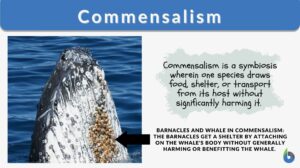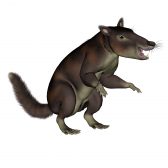Search Results for: feeding
Decomposer
Decomposer Definition The organisms that carry out the process of decay or breakdown of the dead organism are known as... Read More
Primary consumer
Definition noun, plural: primary consumers Any organism that consumes or feeds on autotrophs Supplement A food chain is... Read More
Trophic level
In ecology, a trophic level pertains to a position in a food chain or ecological pyramid occupied by a group of organisms... Read More
Commensalism
Commensalism Definition What is commensalism? Literally, commensalism is a Latin word that means ‘to eat at the same... Read More
Food chain
Everything is a cycle in life. The way organisms consume their food also follows a cycle. This is usually described as the... Read More
Saprophytic
Definition adjective (1) Of or relating to a saprophyte. (2) Feeding, absorbing or growing upon decaying organic matter... Read More
Human milk oligosaccharide
Definition noun plural: human milk oligosaccharides An oligosaccharide that occurs in high concentrations and exclusively... Read More
Freshwater Community Energy Relationships – Producers & Consumers
The previous tutorial on producers and consumers noted the reliance that organisms have on one another to obtain energy to... Read More
Omnivorous diet
Definition noun A type of diet in which both animal and plant matter are the main food source Supplement An omnivorous diet... Read More
Hyaline cartilage
Hyaline Cartilage Definition Before we define hyaline cartilage, let us understand what cartilage is. What is cartilage? Is... Read More
Mammalian Ancestors
Humans are mammals, the most successful taxonomic class of organisms to colonize the Earth. The word mammal derives from the... Read More
Parasitism
Organisms depend on different sources of food to survive. Larger organisms like plants make their own food (autotrophs) and... Read More
Kingdom Animalia
Kingdom Animalia Definition Each person can say that they know of or can name at least one animal. However, do people know... Read More
Osmotrophy
Definition noun The process of taking in of dissolved organic compounds that are absorbed into the cells via extracellular... Read More
Ecological pyramid
Definition noun A graphical representation in the shape of a pyramid to show the feeding relationship of groups of... Read More
Heterotroph
Heterotroph Definition What is a heterotroph? Does a heterotroph make its own food? In biology and ecology, a heterotroph... Read More
Secondary consumer
Definition noun, plural: secondary consumers Any organism that consumes or feeds largely on primary consumers, as well as... Read More
Trophozoite
Definition noun, plural: trophozoites The active, amoeboid cell form that occurs during the feeding stage in the life cycle... Read More
Insect Behavior
Insect Behavior Definition An insect behavior refers to the various actions of an insect in response to a stimulus or to... Read More
Coordination
Coordination Definition When a person hears the word coordination, they think of order, organization, or even managing... Read More
Chelicerate
Definition noun, plural: chelicerates Any of the species belonging to the subphylum Chelicerata Supplement The chelicerates... Read More
Horseshoe crab
Definition noun, plural: horseshoe crabs A crab-like marine chelicerate arthropod of the taxonomic family... Read More
Limiting factor
Limiting Factor Definition A limiting factor refers to any of the factors (variables) in an environment capable of limiting... Read More
Gastric juice
Definition noun The acidic digestive fluid secreted by various glands in the stomach lining into the lumen of the stomach,... Read More
Examples of Natural Selection
Reviewed by: Mary Anne Clark, Ph.D.Darwin's Finches Darwin's finches are an excellent example of the way in... Read More






















